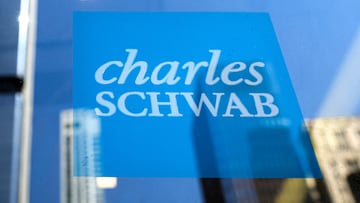What happened with Charles Schwab? What effect was there on investments?
Monday, August 5 was a nervous day across the financial world, with some outages added to the concern for what could be ahead.


On Monday, investors hoping to navigate a turbulent market found themselves in the digital equivalent of a locked door with a “back in five minutes” sign. Charles Schwab and Fidelity Investments, two of the heavyweights in the brokerage world, experienced an outage that left many users unable to log into their accounts. This technical glitch came on a day when traders were scrambling to sell off risky assets amid rising fears of a U.S. recession.
Schwab outage aligns with weak data
The outage, confirmed by both companies but with scant detail, coincided with a perfect storm of weak economic data, disappointing second-quarter earnings from tech giants, and escalating geopolitical tensions. Wall Street’s major indexes took a nosedive, dashing any hopes of a gentle economic downturn. The timing couldn’t have been worse for those needing to adjust their portfolios.
Outage tracking website Downdetector.com reported that Schwab’s services were down for over 3,400 users, while Fidelity’s issues peaked at over 3,500 reports. Vanguard wasn’t immune either, with nearly 2,500 users reporting outages. It’s as if the brokerage giants decided to take a synchronised coffee break just as the market chaos grew.
UNBELIEVABLE!
— Era Gigman (@idan_bg) August 5, 2024
Following the market crash, Charles Schwab (@CharlesSchwab) denied access to users’ accounts! I personally have been waiting for 30 minutes with no one answering yet. This is not a coincidence; Robinhood prevented users from 24-hour trading.
This is a crime… pic.twitter.com/x8dJsLiVmg
Robinhood Markets pause
Fidelity managed to resolve its issue relatively quickly, but the incident highlighted an uncomfortable truth: extreme market volatility can overwhelm even the biggest brokerage firms, raising questions about their capacity to handle high volumes of trades. This wasn’t just a minor hiccup; it was a reminder that even in our high-tech trading world, sometimes the system just can’t keep up.
Related stories
Adding to the drama, Robinhood Markets, the favourite of many retail investors, paused and then resumed overnight trading. This is the same Robinhood that lets users trade stocks and exchange-traded funds around the clock, which might make one wonder if their trading marathon simply hit a wall.
This technical turmoil comes on the heels of Schwab’s recent internal shake-up. Just three weeks prior, Schwab’s shares tumbled after CEO Walt Bettinger announced plans to downsize the company’s bank operations to maintain profitability. In a bid to use capital more efficiently, Schwab plans to partner with outside firms to manage customer deposits off the balance sheet. Bettinger’s strategy, as he explained during the second-quarter earnings call, aims to create a leaner bank that still meets client needs while protecting the company’s financial health.
Complete your personal details to comment